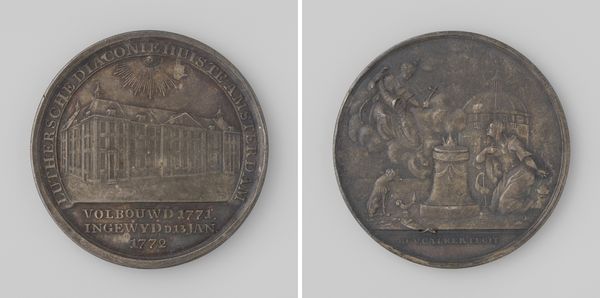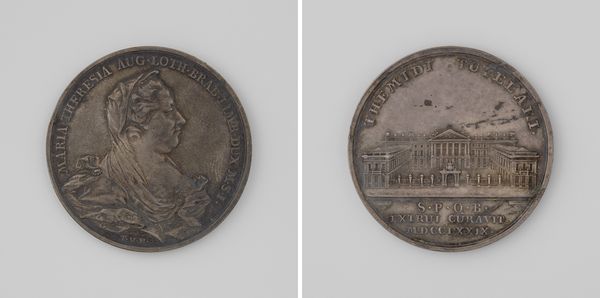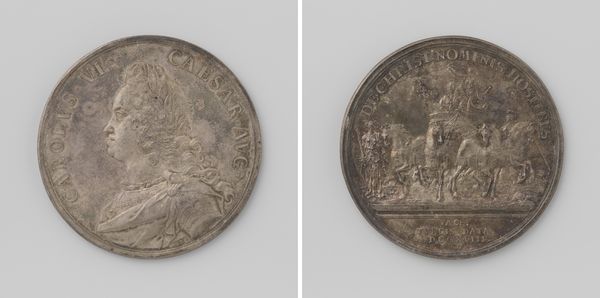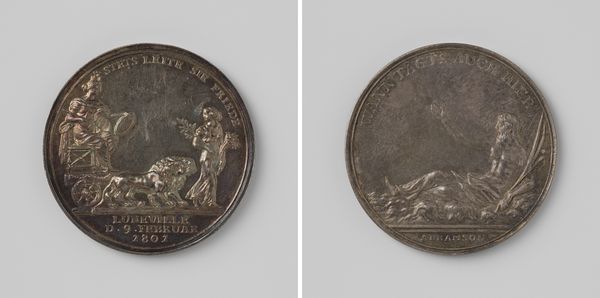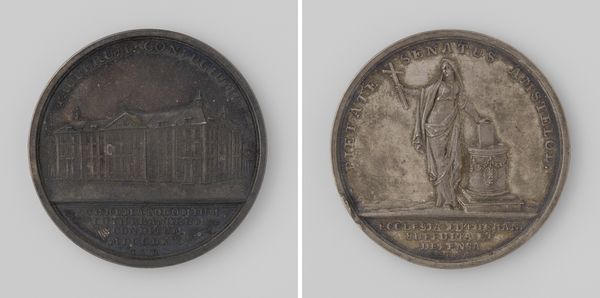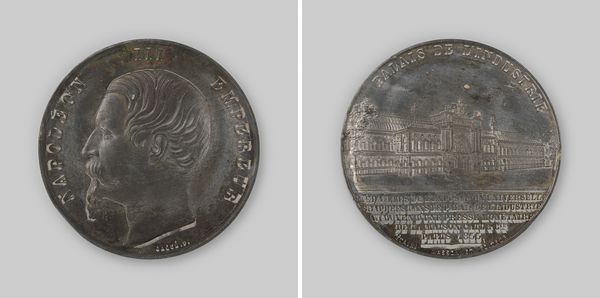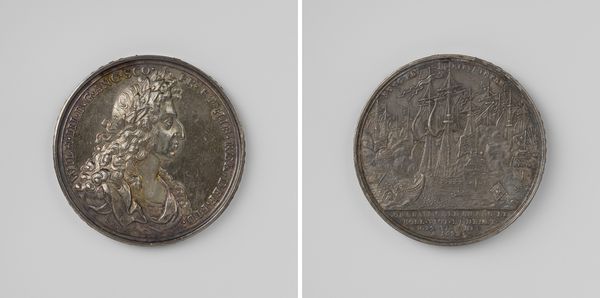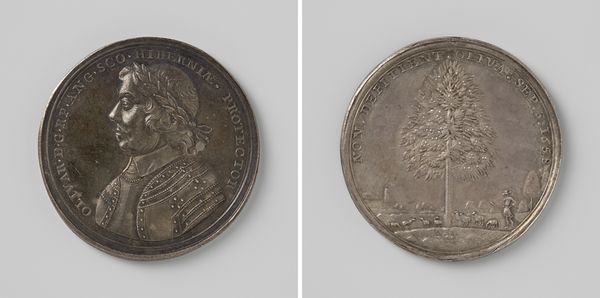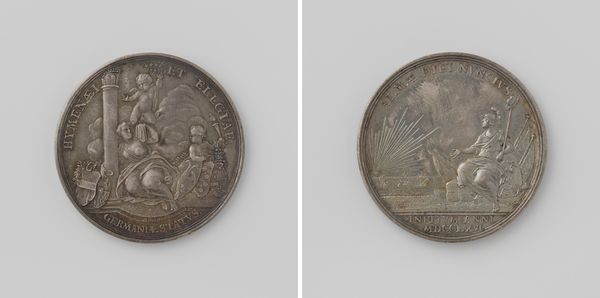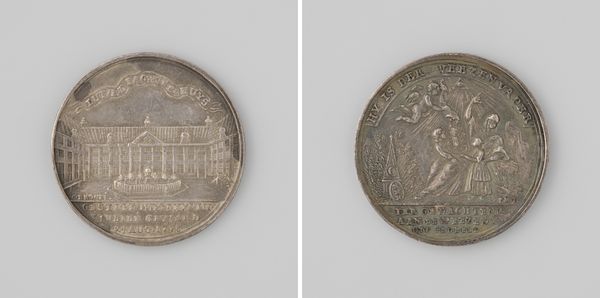
metal, relief, sculpture
#
metal
#
sculpture
#
relief
#
sculptural image
#
sculpture
#
genre-painting
#
history-painting
Dimensions: diameter 3.5 cm, weight 15.23 gr
Copyright: Rijks Museum: Open Domain
Curator: Let’s discuss this intriguing metal relief, "Inwijding van het Luthers diaconiehuis te Amsterdam," dating back to 1772, by Barend Christiaan van Calker. The medal seems to be commemorating the dedication of the Lutheran Diaconiehuis. Editor: It has a stoic, almost commemorative feel to it. The starkness of the metal and the high relief suggest a sense of established power and, frankly, a bit of institutional solemnity. What's particularly striking is the juxtaposition of the architectural image with the almost dreamlike scene on the reverse. Curator: Absolutely. Looking at the imagery from an historical lens, we see on one side the Diaconiehuis building itself, rigidly depicted, symbolizing order and establishment, alongside a clear inscription with names – most likely key figures connected with the commission or construction. Then, conversely, we are presented with a more allegorical, theatrical scene involving angels, figures in repose, and a classical dome. It presents the charitable work in terms of piety and virtue. Editor: It raises an important point about institutional self-representation. Consider the era: What did it mean to depict charity, to represent aid, and who was being seen and not seen in this exchange? The contrast of clear legible inscription and architecture vs. ephemeral divinity also speaks to the way buildings accrue value within communities versus transcendental notions of salvation. Curator: And the inscription itself is telling; the individuals named likely represent the patrons, shifting power and shaping narratives. How does naming specific individuals play into systems of privilege that affect the structure of such a charitable system, creating a power hierarchy? Editor: Exactly, by identifying the gatekeepers, you further institutionalize power and philanthropy as being defined and determined by specific communities, classes and interests, with specific values that can be seen, for instance, in architectural language or religious tone. The choice of imagery, especially that seemingly divine crowning in contrast with those names, emphasizes existing paradigms of power in rendering assistance or alms. Curator: Perhaps it's worth examining the metal and bas relief itself. Does the choice of metallic material signify the inherent value of institutions themselves? Editor: Fascinating, I agree! When we read these power dynamics inherent in philanthropy, institutional self-definition, coupled with a striking visual style, the diaconie begins to mean much more than just monetary alms, I think.
Comments
No comments
Be the first to comment and join the conversation on the ultimate creative platform.
